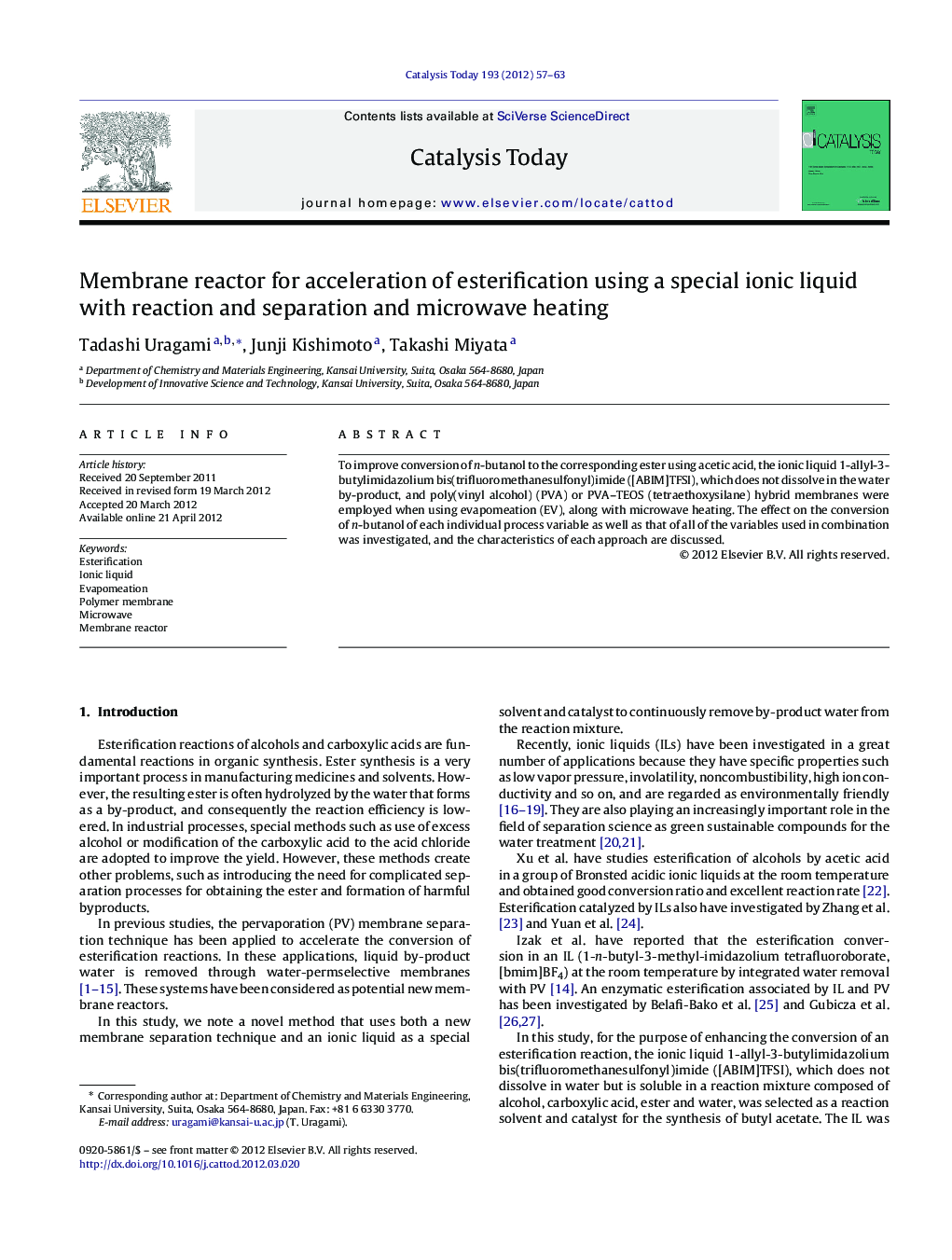| Article ID | Journal | Published Year | Pages | File Type |
|---|---|---|---|---|
| 55062 | Catalysis Today | 2012 | 7 Pages |
To improve conversion of n-butanol to the corresponding ester using acetic acid, the ionic liquid 1-allyl-3-butylimidazolium bis(trifluoromethanesulfonyl)imide ([ABIM]TFSI), which does not dissolve in the water by-product, and poly(vinyl alcohol) (PVA) or PVA–TEOS (tetraethoxysilane) hybrid membranes were employed when using evapomeation (EV), along with microwave heating. The effect on the conversion of n-butanol of each individual process variable as well as that of all of the variables used in combination was investigated, and the characteristics of each approach are discussed.
Graphical abstractFigure optionsDownload full-size imageDownload high-quality image (249 K)Download as PowerPoint slideHighlights► A specific ionic liquid was used as catalyst and solvent. ► Separation membrane and microwave were employed to accelerate esterification. ► Esterification in each individual process was improved. ► Esterification in their combination furthermore was increased.
